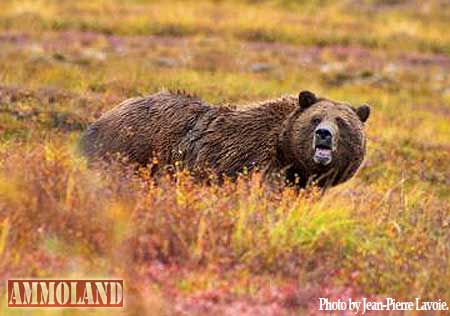

WASHINGTON D.C. -(Ammoland.com)- The Association of Fish & Wildlife Agencies strongly supports the formal delisting decision for grizzly bears in the Greater Yellowstone ecosystem.
he announcement last month by Secretary of the Interior Ryan Zinke brought to a close 41 years of research and restoration initiatives in keeping with the federal Endangered Species Act (ESA).
“We have reason to celebrate this conservation achievement,” stated Nick Wiley, President of the Association of Fish and Wildlife Agencies and Executive Director of the Florida Fish and Wildlife Conservation Commission. “Due to the collaborative efforts between state fish and wildlife agencies, federal agencies, and the conservation community, the conservation goals of the grizzly bears in the Greater Yellowstone ecosystem have been achieved and surpassed.”
“State fish and wildlife agencies are on the cutting edge of conservation delivery all across the country with science-based restoration and management programs and this is a great example of state leadership with the recovery of an iconic keystone species,” noted Ron Regan, Executive Director of the Association of Fish and Wildlife Agencies. “The states of Idaho, Montana, and Wyoming, in keeping with their missions, will ensure a heathy, sustainable grizzly population in the Yellowstone area through proven landscape-level management strategies.”
There are over 700 grizzly bears in the Greater Yellowstone population, which satisfies ESA recovery criteria, up from over 100 bears when grizzlies were listed in 1975.
The Greater Yellowstone Ecosystem (GYE) Distinct Population Segment (DPS) consists of portions of northwestern Wyoming, southwestern Montana and eastern Idaho. These three states have spent millions of state dollars to recover the grizzly bears in the Greater Yellowstone ecosystem.
The Association would like to acknowledge and thank these states for that significant investment to recover this species in the GYE DPS for their citizens and the citizens of our Nation. This success would not have been realized without that state investment and their collaborative efforts.
Other grizzly bear populations in the lower 48 states will continue to be listed under the ESA.
About The Association of Fish & Wildlife Agencies:
The Association of Fish & Wildlife Agencies represents North America’s fish and wildlife agencies to advance sound, science-based management and conservation of fish and wildlife and their habitats in the public interest. The Association represents its state agency members on Capitol Hill and before the Administration to advance favorable fish and wildlife conservation policy and funding and works to ensure that all entities work collaboratively on the most important issues. The Association also provides member agencies with coordination services on cross-cutting as well as species-based programs that range from birds, fish habitat and energy development to climate change, wildlife action plans, conservation education, leadership training and international relations. Working together, the Association’s member agencies are ensuring that North American fish and wildlife management has a clear and collective voice.
